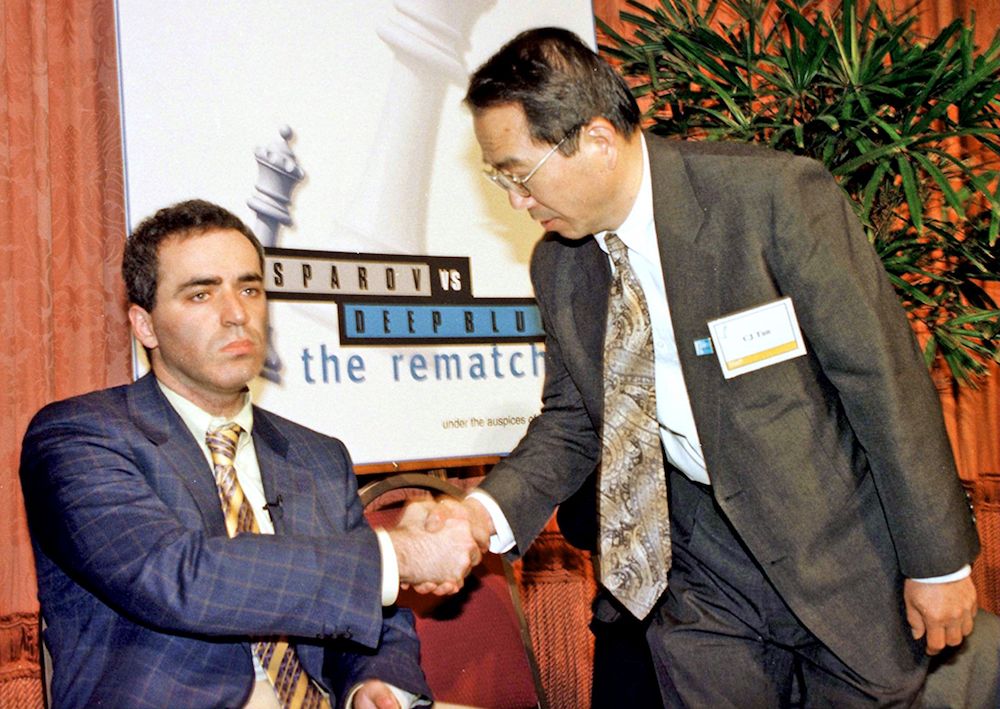Deep Blue Chess Software

Deep Blue Chess Software. Flash Chess v.1.0. Flash Chess is a simple, fun game allowing you to play chess against your computer on a 3D board. You can choose between shallow and deep difficulty. The computer is made to think for only a few seconds per move at the most, so you can keep the game.
The Story
For much of modern history, chess playing has been seen as a 'litmus test' of the ability for computers to act intelligently. In 1770, the Hungarian inventor Wolfgang von Kempelen unveiled 'The Turk', a (fake) chess-playing machine. Although the actual machine worked by allowing a human chess player to sit inside of it and decide the machine's moves, audiences around the world were fascinated by the idea of a machine that could perform intelligent tasks at the same level as humans.
With the advent of computers in the 1940s, researchers and hobbyists began the first serious attempts at making an intelligent chess-playing machine. Game maker easy and free. In 1950, Claude Shannon published a groundbreaking paper entitled 'Programming a Computer for Playing Chess', which first put forth the idea of a function for evaluating the efficacy of a particular move and a 'minimax' algorithm which took advantage of this evaluation function by taking into account the efficacy of future moves that would be made available by any particular move. This work provided a framework for all future research in computer chess playing.
As was the case with many subfields of Artificial Intelligence at this time, progress in the development of chess-playing hardware lagged behind the theoretical frameworks developed in the 60s and 70s, building on Shannon's work. The public was doubtful that a machine would ever be able to defeat a proficient human chess player. Chessmaster and computer chess pioneer David Levy famously made the following statement in 1968: 'Prompted by the lack of conceptual progress over more than two decades, I am tempted to speculate that a computer program will not gain the title of International Master before the turn of the century and that the idea of an electronic world champion belongs only in the pages of a science fiction book.'
In the mid-1990s, however, the tides began to change. Despite the lingering skepticism of the chess community (when asked to confirm his belief that Garry Kasparov could beat any existing computer chess program, Levy stated, 'I'm positive. I'd stake my life on it'), chess-playing computers began to beat extremely proficient chess players in exhibition matches. The turning point came in 1997, when Chessmaster Garry Kasparov faced off against IBM's chess-playing computer Deep Blue in New York, NY in an official match under tournament regulations. Despite having lost a previous match against Kasparov in 1996, Deep Blue won the 1997 match 3.5 to 2.5 and became the first computer program to defeat a world chess champion in match play.
Since the seminal 1997 victory, chess-playing computer programs have built upon Deep Blue's developments to become even more proficient and efficient. Nowadays, one can run chess programs even more advanced than Deep Blue on a standard desktop or laptop computer.
Double-click Windows Installer in the Services list to open its properties window. On the General tab, make sure the service is started under Service status. If the service was stopped, under Service status, then start the service by clicking on the Start button, and then click OK. Step 2: Unregister and re-register the Windows Installer Press Windows + R to open Run. Repair windows 10 error code 2753 uninstaller for mac.